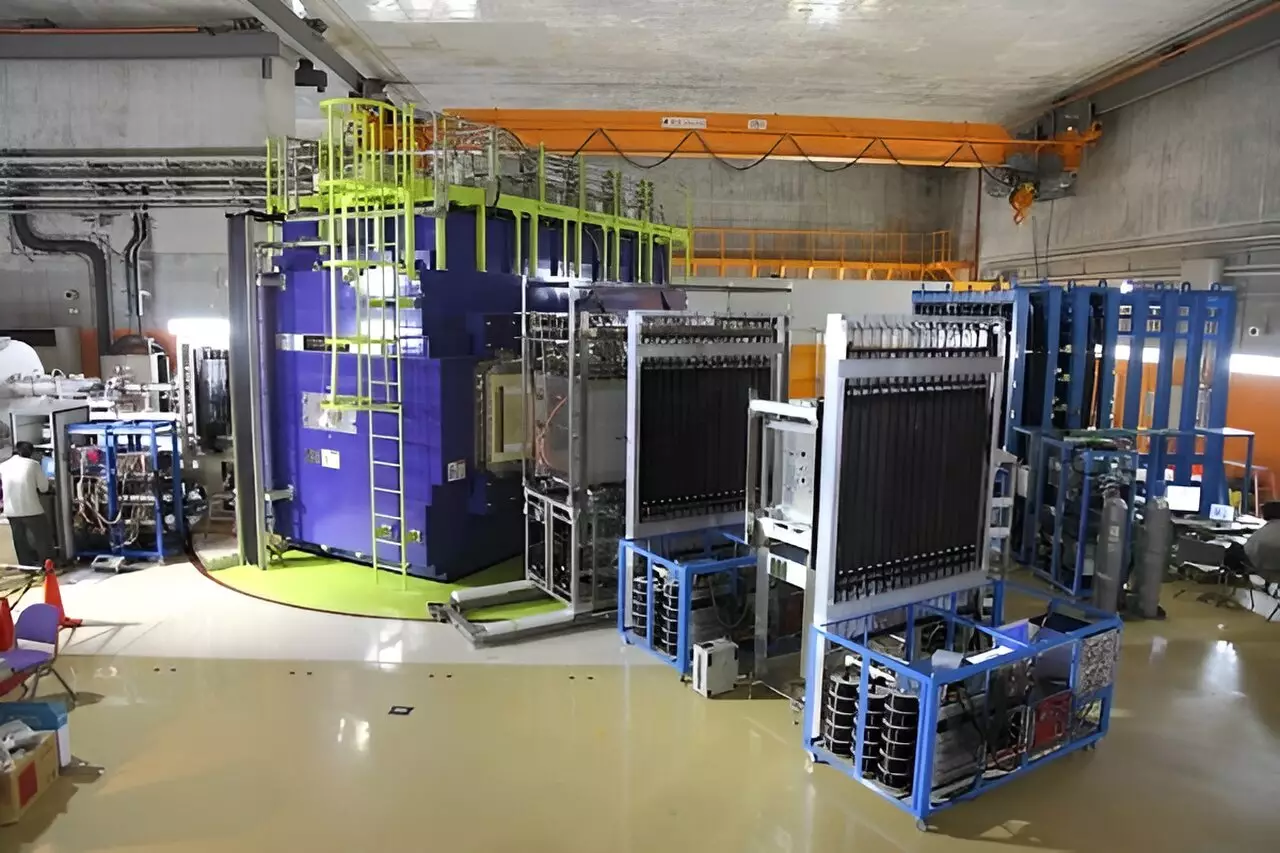The field of nuclear physics often teeters on the edge of the unknown, harboring enigmatic structures that challenge our foundational theories. A recent groundbreaking discovery concerning the isotope 30F has emerged from the advanced facilities at RIKEN’s RI Beam Factory (RIBF) in Japan. Conducted by the SAMURAI21-NeuLAND Collaboration, this research sheds light on the behavior of extremely neutron-rich isotopes, potentially altering our understanding of nuclear physics.
The elusive isotope 30F has been a point of intrigue due to its instability and short lifespan of approximately 10-20 seconds. This characteristic makes direct measurements extremely challenging, necessitating innovative experimental techniques. The findings of the collaboration have been published in “Physical Review Letters” and detail the processes through which the isotope was detected, bridging gaps in the current knowledge regarding nuclear structures. Specifically, researchers focused on the neutron separation energy of 30F, which forms a critical part of understanding nuclear stability.
“In our quest to explore neutron-rich nuclei, we are pushing the limits of what the atomic structure can reveal,” stated Julian Kahlbow, the primary author of the study. The research aims not only to identify the properties of 30F but also to analyze the implications these properties hold for existing nuclear theories, particularly concerning what physicists refer to as nuclear “magic numbers”—stable configurations of protons and neutrons within a nucleus.
Magic numbers are pivotal in nuclear physics as they signify particularly stable arrangements of nucleons (protons and neutrons). Traditionally, at a neutron number of N=20, a large energy gap exists, leading to enhanced stability. However, the latest research delves into exceptions to this simplicity found in the “Island of Inversion,” wherein neutron-rich isotopes like 29F and 30F defy these conventional structures. Kahlbow’s team is scrutinizing the circumstances under which these nuclear magic numbers may cease to exist, particularly as they apply to isotopes beyond the traditional stable configurations.
This exploration has broader implications—by delving into 30F, researchers are poised to unravel how atomic behavior shifts under abnormal conditions, reshaping the landscape of nuclear physics understanding. The interplay between the known behavior of heavier nuclei and the rapid decay of ultra-neutron-rich isotopes like 30F fosters curiosity about how these nuclei form and behave.
Due to the ephemeral nature of 30F, researchers had to devise a meticulous method for its detection. The initial step involved the production of a 31Ne ion beam, generated using the BigRIPS fragment separator, directed at a liquid hydrogen target. The interaction led to the ejection of a proton, resulting in the fleeting existence of 30F. Consequently, the team relied on analyzing the decay products—primarily neutrons and 29F—through sophisticated instruments, including the NeuLAND neutron detector.
The application of such innovative techniques not only allowed researchers to reconstruct the characteristics of 30F but also enabled them to glean information about the broader arrangement of nucleons in rarely encountered isotopes. “The collaborative prowess of over 80 researchers facilitated a comprehensive analysis, ensuring we extracted meaningful data despite the challenging experimental limits,” Kahlbow noted.
Beyond merely documenting the properties of 30F, the research hints at complex phenomena within atomic nuclei, such as the potential for superfluid states in neutron-rich systems. The researchers postulated that isotopes like 29F and 28O may exhibit a superfluid phase indicative of unique nuclear interactions. “Our findings suggest that pairing among excess neutrons can induce transitions to a state akin to Bose-Einstein condensates,” Kahlbow explained.
The notion of superfluidity in weakly bound systems is groundbreaking, as it has been less frequently observed within the broader chart of nuclides. Historically, such phases have been noted in heavier isotopes like tin but are rarely seen near the border of stability. This research not only advances the theory of superfluid states but also brings to light new questions about the nature of interactions between nucleons in extreme environments.
The implications of these findings extend beyond the immediate confines of the laboratory. As the study of isotopes like 30F progresses, it could offer valuable insights into high-energy astrophysical phenomena, including the structures of neutron stars and nuclear reactions in stellar environments. Kahlbow’s team anticipates pursuing further research into the properties of 29F and 28O, aiming to substantiate the hypotheses generated through their initial findings.
The SAMURAI21/NeuLAND Collaboration’s resonating discoveries may herald a new era in nuclear research. With advanced accelerator technology paving the way, this group of dedicated scientists is uncovering regions of the chart of nuclides that have yet to be explored. As Kahlbow aptly sums up, “We’ve only just begun to scratch the surface of understanding the breathtaking complexity of nuclear structures at their most extreme.” The journey into this uncharted territory promises to unveil remarkable insights into the very nature of matter itself.


Leave a Reply